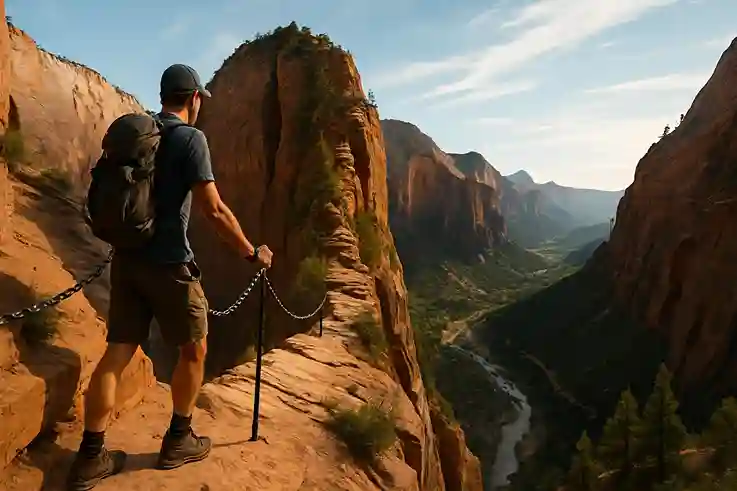Discover Hidden Travel Spots Most Tourists Miss
Hidden Travel Spots aren’t just places—they’re experiences waiting to be found. While crowds rush to the same famous landmarks, quiet corners of America hide breathtaking escapes that many overlook. These destinations still feel raw, unpolished, and authentic—like finding a page torn from an old travel diary.
In this guide, you’ll journey to five underrated gems scattered across the United States. Each offers something unforgettable—whether it’s sunrise over untouched shores, trails where you won’t see another hiker for hours, or small-town charm you can still feel in every handshake.
You’ll learn when to visit, how to get there, and what to see nearby so you can plan without missing a moment. By the end, you might just have a new favorite spot—and it won’t be on the front cover of any tourist brochure.
Sedona’s Secret Canyons, Arizona
Beyond Sedona’s world-famous red rock trails lies a quieter, almost secret world—its hidden canyons. These narrow sandstone passageways twist and turn like nature’s own labyrinth, shielding travelers from the rush of the main paths. Here, sunlight filters in thin golden ribbons, painting the walls in shifting shades of crimson and gold. The air feels cooler, scented with juniper and damp earth after a light rain. You might catch the soft gurgle of a seasonal stream or the distant cry of a raven echoing between the canyon walls. Every step deeper draws you further from the clamor of tourist lookouts, replacing it with the whisper of the wind weaving through cottonwood leaves—a soundtrack only nature could compose.
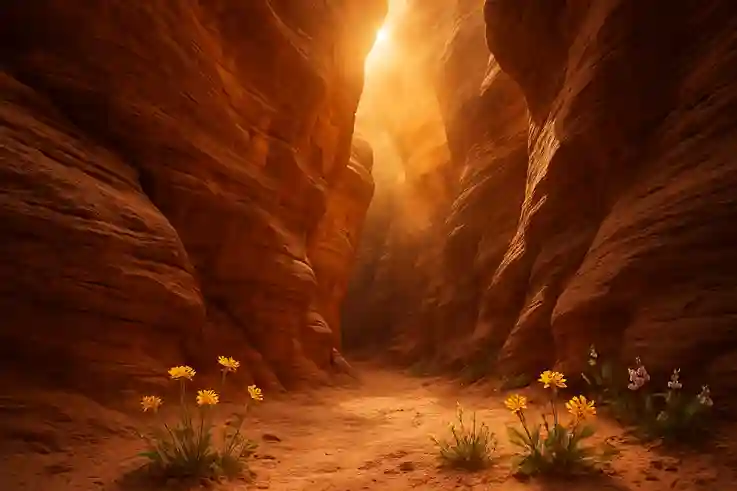
Best time to visit
March to May transforms the canyon floor into a living carpet of wildflowers. Vibrant lupines, desert marigolds, and Indian paintbrush bloom in every shade imaginable. The air is fresh, and mornings are crisp—ideal for early hikes. September to November brings cooler days and golden light that makes the sandstone glow. It’s the perfect season for long, unhurried treks without the summer crowds.
How to get there
Fly into Phoenix Sky Harbor International Airport, the state’s main hub with flights from across the U.S. From there, rent a car and head north on I-17. The drive takes about two hours, but it’s more than just a commute—it’s a preview of Arizona’s beauty. Rolling desert hills give way to pine-covered slopes as you approach Sedona. The final stretch along State Route 179 is especially stunning, with red rock spires rising in the distance.
Nearby attractions
Just minutes from Sedona’s hidden canyons, the Chapel of the Holy Cross offers breathtaking cliffside views framed by red rock peaks—a must for photography lovers. For a playful break, head to Slide Rock State Park, where the natural sandstone chutes create a refreshing waterslide in Oak Creek. Both spots pair perfectly with a canyon hike, rounding out a day of exploration that feels both adventurous and serene.
Why it’s underrated
While crowds swarm Cathedral Rock and Bell Rock, few venture into Sedona’s hidden canyons. These secluded corridors offer cool shade, gentle streams, and a rare sense of solitude. It’s the kind of red rock experience where you can pause, breathe, and feel like you’ve stumbled onto a secret the guidebooks forgot to mention.
Cumberland Island, Georgia
Among the most remarkable Hidden Travel Spots in the U.S., Cumberland Island feels suspended between past and present. This windswept barrier island greets visitors with untouched beaches where soft sand stretches for miles without a single footprint. Moss-draped live oaks form shaded tunnels, their branches swaying gently above winding trails. Historic ruins, weathered by salt air and time, stand as silent witnesses to centuries gone by. Wild horses roam freely across dunes and meadows, their silhouettes framed against the Atlantic horizon. Here, the modern world feels distant—replaced by the rhythmic crash of waves, the call of seabirds, and the quiet crunch of shells beneath your shoes.
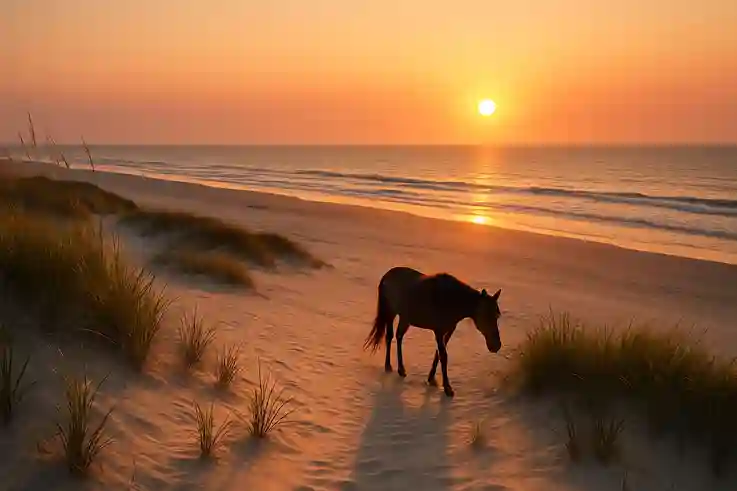
Best time to visit
Spring and fall bring mild temperatures and fewer biting insects, making them ideal seasons for long walks along the beach or shaded forest trails.
How to get there
Your journey begins in the small coastal town of St. Mary’s, Georgia. This charming gateway offers a short but scenic ferry ride—about 45 minutes—to Cumberland Island National Seashore. The ferry departs only a few times a day, so advance reservations are essential. As the boat approaches the island, you’ll see untouched shoreline stretching for miles, with no high-rises or busy marinas in sight. Vehicles aren’t allowed for visitors, so once you arrive, be ready to explore on foot or by bicycle. The sense of stepping into a wilder, quieter world begins the moment you step off the dock.
Nearby attractions
Begin with the Dungeness Ruins, a crumbling yet elegant reminder of the Carnegie family’s opulent estate. Vines creep over weathered stone walls, and the quiet hum of nature fills the air where grand parties once echoed. Beyond the ruins, the island’s beaches stretch for miles without a single building in sight. You might walk an hour without meeting another soul, your only company the rhythmic surf and the occasional seabird. Keep your eyes on the open meadows and dunes—wild horses often appear here, moving slowly and unbothered, as if they’ve ruled this land for centuries. Their presence feels almost mythical, adding to Cumberland Island’s timeless charm.
Why it’s underrated
Though it holds the prestigious title of a national seashore, Cumberland Island remains off the radar for many travelers. Its location demands intention—you can’t stumble upon it without planning a ferry ride and embracing limited amenities. There are no resorts, no beachfront cafés, no neon signs, just nature in its raw form. This lack of commercial development is precisely what preserves its quiet beauty. While other coastal destinations overflow with umbrellas and boardwalk noise, Cumberland’s beaches are often empty, the dunes undisturbed except for deer tracks or the meandering path of a wild horse. For those willing to trade convenience for solitude, it offers one of the rarest luxuries in travel—true seclusion.
Great Basin National Park, Nevada
Tucked away in the remote reaches of eastern Nevada, Great Basin National Park stands as one of the most overlooked Hidden Travel Spots in the U.S. This vast, wild expanse offers a diversity of landscapes rarely found in one place—alpine lakes glistening beneath jagged peaks, sagebrush valleys stretching toward the horizon, and forests where ancient bristlecone pines have stood for more than 4,000 years. By day, trails lead you through meadows alive with wildflowers in summer and golden aspens in fall. By night, the park transforms into one of the darkest, clearest stargazing destinations in the country, its sky ablaze with the Milky Way and countless constellations.
What sets Great Basin apart is its quiet. You can hike for hours without seeing another soul, your footsteps softened by pine needles and the hum of the wind through the mountains. Glacially carved peaks stand sentinel over valleys that seem untouched by time, and the absence of crowds allows the landscape to speak for itself. It’s a place where the modern world fades away, replaced by the timeless rhythms of nature—one that rewards those willing to venture far off the beaten path.
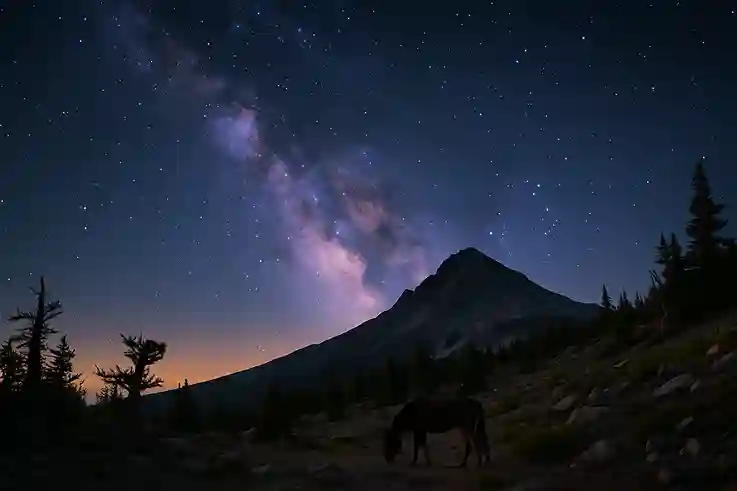
Best time to visit
Summer in Great Basin National Park offers warm days and crystal-clear nights, making it the prime season for stargazing. Thanks to its official Dark Sky designation, the park becomes a natural observatory after sunset, where the Milky Way arches overhead and shooting stars streak across the night. The annual astronomy festival in late summer draws both amateur and professional stargazers who come to share telescopes and sky stories.
Fall brings a completely different kind of beauty. The air turns crisp, the crowds remain minimal, and the aspens ignite in shades of gold against the deep green pines. Cooler temperatures make long, high-altitude hikes—such as the trek to Wheeler Peak or the Bristlecone Pine Trail—more comfortable and rewarding. Whether you visit in the warmth of summer or the vibrant chill of fall, both seasons reveal the park’s quiet grandeur in distinctly memorable ways.
How to get there
From Las Vegas, the drive to Great Basin National Park takes about 4.5 hours, winding through a shifting tapestry of desert basins, rugged mountains, and wide-open skies. The route along U.S. Highway 93 offers glimpses of small Nevada towns, abandoned mining relics, and long stretches where it’s just you, the road, and distant horizons. As you climb in elevation toward the park’s entrance, the air cools and the landscape transforms—from sun-baked sagebrush flats to forests of juniper and pine. The journey itself feels like a slow shedding of urban noise, preparing you for the deep quiet that defines this hidden corner of the West.
Nearby attractions
Beneath the park’s surface lies Lehman Caves, a spectacular marble cavern adorned with stalactites, stalagmites, and rare shield formations that have been slowly sculpted over millions of years. Guided tours take you deep into its cool, echoing chambers, where every turn reveals new geological wonders. Above ground, adventurers can take on the challenge of summiting Wheeler Peak, Nevada’s second-highest mountain at over 13,000 feet. The climb passes ancient bristlecone pine groves and alpine lakes before culminating in sweeping, 360-degree views of the state’s rugged heartland. On clear days, you can see across hundreds of miles, from snowcapped peaks to distant desert basins.
Why it’s underrated
Great Basin National Park lives in the shadow of America’s most famous national parks, often overlooked by travelers racing toward Zion, Bryce Canyon, or Yellowstone. Yet this quiet obscurity is its secret gift. With no congested parking lots or long shuttle lines, the park offers a rare kind of wilderness solitude. Vast alpine meadows bloom with wildflowers in summer, pristine glacier-fed lakes reflect jagged peaks, and trails lead to bristlecone pines that have been alive for thousands of years. At night, the sky explodes with stars so bright and numerous they seem to hum in the silence. For those willing to journey here, the reward is the feeling of having a national park almost entirely to yourself.
Here’s the official link to Great Basin National Park, Nevada
Apostle Islands, Wisconsin
Scattered across the icy expanse of Lake Superior, the Apostle Islands are a cluster of 21 rugged and remote gems that challenge everything you thought you knew about Midwest landscapes. Each island offers a different mood—some are crowned with old-growth forests and quiet beaches, while others stand boldly against the wind with sheer sandstone cliffs. Over centuries, the lake’s relentless waves have carved a labyrinth of sea caves, tunnels, and arches, each more photogenic than the last.
In the warmth of summer, the waters calm enough for kayakers to glide through narrow rock corridors lit by reflected sunlight. The scent of pine and the sound of waves create a rhythm that makes time feel slower. When winter arrives, the lake hardens into ice and the caves become surreal frozen cathedrals—walls sparkling with icicles, chambers glowing faintly blue in the filtered light.
This rare dual personality—playful and adventurous in summer, quiet and magical in winter—makes the Apostle Islands one of the most extraordinary Hidden Travel Spots in the U.S. It’s a destination that rewards patience, promising beauty no matter the season, and solitude you’ll remember long after you’ve left its shores.
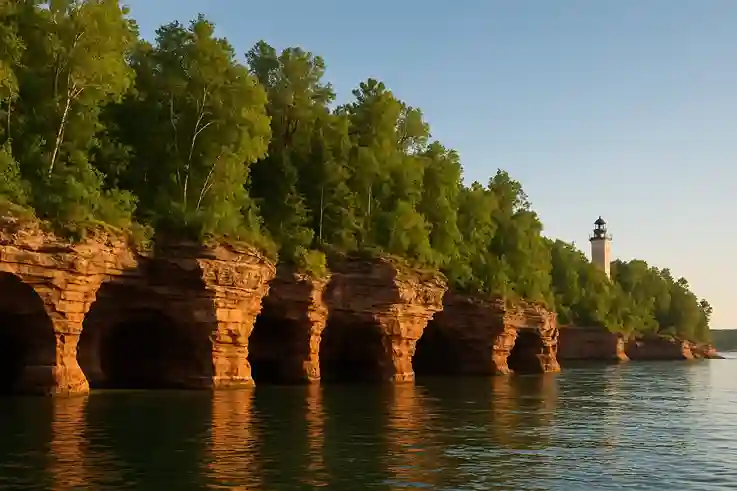
Best time to visit
In winter, frigid temperatures lock Lake Superior into silence, and thick ice opens a rare path to the Apostle Islands’ legendary ice caves. Inside, frozen waterfalls drip from the ceilings, and walls shimmer with crystal-like formations—a fleeting wonder that exists only when conditions are safe. By contrast, summer transforms the islands into a paddler’s paradise. Calmer waters and long daylight hours invite kayaking beneath sunlit arches, camping on secluded shores, and hiking through wildflower-strewn meadows framed by ancient forests. Each season offers its own magic, making it worth visiting twice.
How to get there
Begin your journey in Bayfield, Wisconsin, a small lakeside town that serves as the gateway to the Apostle Islands. From its harbor, ferries and water taxis shuttle visitors to select islands, while others remain reachable only by private boat or guided excursion. This limited access preserves the wild, untouched feel of the archipelago, making each trip across Lake Superior feel like a step into a more remote and unspoiled world.
Nearby attractions
Don’t miss the sea caves of Devils Island, where towering sandstone walls, streaked in reds and yellows, form natural arches and echoing chambers shaped by centuries of relentless waves. The light filtering through the caves creates a magical glow, perfect for photography and quiet reflection. Explore the historic lighthouses scattered across the islands—silent sentinels that once safeguarded mariners navigating Lake Superior’s treacherous waters. Hiking trails weave through dense forests of spruce and fir, opening onto vistas of sparkling lake waters and untouched shorelines. Each step offers a new perspective on this hidden coastal wilderness.
Why it’s underrated
When people imagine stunning coastlines, the Midwest rarely crosses their minds. Yet the Apostle Islands quietly defy expectations, offering wild natural beauty paired with rich maritime history. Unlike crowded beaches along the Atlantic or Pacific, these islands remain peaceful sanctuaries thanks to their remote location and limited visitor access. For travelers willing to venture off the beaten path, the reward is a rare blend of solitude, untouched wilderness, and a deep sense of discovery—hallmarks of the best Hidden Travel Spots in America.
Taos Pueblo, New Mexico
Nestled in the rugged high desert of northern New Mexico, Taos Pueblo stands as one of the most culturally profound Hidden Travel Spots in the U.S. This living UNESCO World Heritage Site has welcomed generations of residents for over 1,000 years, making it one of the oldest continuously inhabited communities in North America. Its adobe homes, built from sunbaked earth and straw, rise in graceful terraced layers, their warm ochre tones blending with the dusty reds and browns of the surrounding mesas.
Walking through Taos Pueblo feels like stepping into a timeless world where tradition breathes in every stone and ceremony. Visitors here experience an intimate connection with indigenous culture—hearing ancient languages, witnessing handcrafted pottery, and observing rituals passed down through centuries.
Best time to visit
Fall breathes life into Taos Pueblo with vibrant cultural festivals that fill the air with traditional music, rhythmic dance, and handcrafted artistry. These celebrations offer a unique window into the community’s enduring heritage and provide visitors with authentic experiences that go beyond typical sightseeing. Spring brings mild, comfortable weather—ideal for wandering through the pueblo’s ancient adobe structures and exploring nearby natural wonders like the Rio Grande Gorge without the summer crowds. Both seasons highlight different facets of Taos Pueblo’s charm, making each visit rewarding in its own way.
How to get there
Begin your journey by flying into Albuquerque International Sunport, New Mexico’s main airport with connections across the U.S. From there, embark on a scenic 2.5-hour drive north to Taos. The route unfolds through expansive high desert landscapes dotted with red rock formations and sprawling mesas, offering a visual prelude to the region’s rich cultural and natural heritage. The drive itself invites reflection and anticipation, as the open road winds toward the ancient adobe dwellings of Taos Pueblo, nestled amidst this iconic Southwestern terrain.
Nearby attractions
No visit to Taos Pueblo is complete without crossing the dramatic Rio Grande Gorge Bridge. Spanning one of the West’s deepest river gorges, the bridge offers breathtaking panoramic views of the rugged canyon carved by the Rio Grande over millennia. For those seeking adventure, Taos Ski Valley awaits just a short drive away—a year-round playground where summer hiking trails weave through wildflower-filled meadows, and winter blankets the slopes in pristine snow for skiing and snowboarding. Together, these nearby attractions complement the cultural richness of Taos Pueblo with unforgettable natural beauty and outdoor excitement.
Why it’s underrated
Though recognized as a UNESCO World Heritage Site, Taos Pueblo often remains overshadowed by more commercialized Southwestern destinations. What sets it apart is its status as a living community—where centuries-old traditions continue to shape daily life. Visitors here witness authentic cultural practices, from pottery making to ceremonial dances, that aren’t staged for tourists but are vital to the community’s identity. This rare blend of history, culture, and ongoing life offers an experience that few other destinations can match, making Taos Pueblo a truly unique Hidden Travel Spot worth discovering.
FAQs About Hidden Travel Spots
Conclusion
Exploring the USA’s Hidden Travel Spots offers more than just a change of scenery—it opens the door to authentic experiences, quieter moments, and deeper connections with both nature and culture. From the secret canyons of Sedona to the icy wonders of the Apostle Islands, these underrated destinations reveal sides of America that often go unnoticed. They invite travelers to slow down, step off the beaten path, and discover places where the crowds are few but the memories are rich.
Visiting these spots not only rewards you with breathtaking landscapes and unique adventures but also supports communities and environments that thrive away from mass tourism. Whether you’re drawn to ancient adobe homes in Taos Pueblo or the star-studded skies above Great Basin National Park, each location carries its own story—waiting to be experienced with respect and curiosity.
By seeking out these Hidden Travel Spots, you become part of a growing movement of thoughtful travelers who value quality over quantity, solitude over noise, and genuine discovery over commercial spectacle. So pack your bags, plan your itinerary carefully, and prepare to be surprised by the beauty and wonder that await in America’s lesser-known treasures. Your next unforgettable journey might just begin where most don’t look.
Ready to uncover your next adventure?
Share your favorite hidden travel destinations or secret spots you’ve discovered in the comments below.

Silvia Heart is a lifestyle and wellness writer with a background in apparel and a degree in fashion. She blends creativity with practical insights, guiding readers toward intentional, balanced living. Through her approachable style and thoughtful storytelling, Silvia inspires her community to embrace both everyday joy and personal growth.


